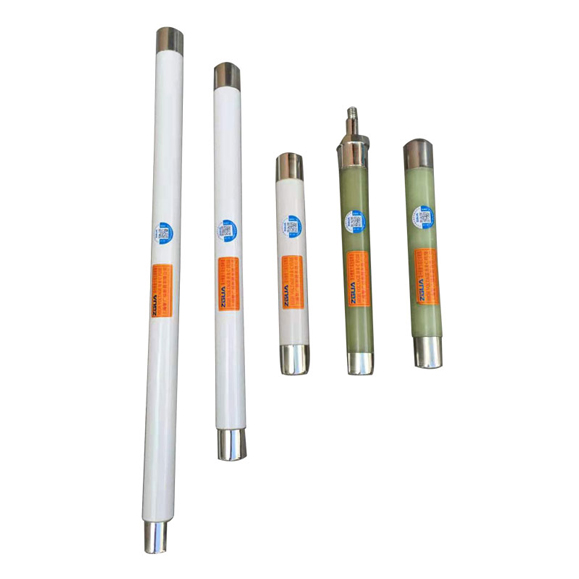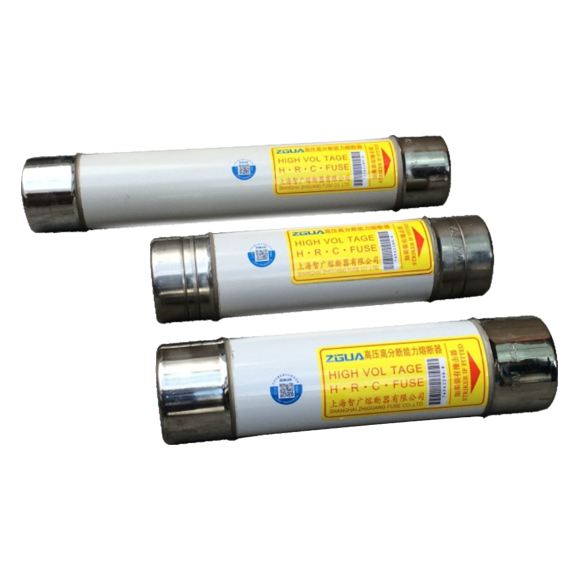How many kv are high voltage fuses widely used in?What does N stand for in the high voltage fuse model?
How many kv are high voltage fuses widely used in?
High-voltage fuses are widely used in 3-35kV power stations and substations. There are two types of commonly used high voltage fuses:
【1】Indoor high-voltage current-limiting fuse, the highest rated voltage can reach 40.5kV.
Commonly used models are RN 1, RN 3, RN 5, XRNM 1, XRN T 1, XRN T 2, and XRN T3, which are mainly used to protect the overload and short circuit of power lines, power transformers and power capacitors.
【2】Outdoor high-voltage jet fuses, when the fuse is blown to generate an arc, it needs to wait for the current to cross zero before breaking the circuit, and it has unlimited current function.
Commonly used models are RW 3, RW 4, RW 7, RW 9, RW 10, RW 11, RW 12, RW 13, etc. Their functions are the same as those of RN 1, and they can also be broken and closed under certain conditions. No-load overhead lines, no-load transformers and small load currents.
RW 10- 35/0.5 type is an outdoor product dedicated to 35kV voltage transformers in the protected area.
So choose according to the type of fuse and different protection objects.

The role of high voltage fuse
High-voltage fuse: It is the weakest component artificially installed in the power grid to protect electrical devices from damage caused by over-current or short-circuit current. When the overcurrent flows, the element itself will heat and fuse, and the circuit will be interrupted by the action of the arc extinguishing medium, so as to protect the power line and electrical equipment.
What does N stand for in the high voltage fuse model?
【1】The letter N, N in the model of the high-voltage fuse represents the model for indoor installation.
【2】The letter R represents the product of the fuse, which stands for fuse insurance.
【3】The letter W represents a high-voltage fuse that can be installed outdoors or outdoors.
[4] The letter N, opposite to the letter W, means indoor or indoor, that is, a high-voltage fuse installed indoors.
Of course, there are usually some numbers after the letter of the high-voltage fuse model. For example, the number after the letter is 2, which means that the design number is 2; and the number after the "—" line represents the rated voltage of the high-voltage fuse, such as 10, then it means that the rated voltage of the high voltage fuse is 10KV.
What is the material of the high voltage fuse?
The material of the high voltage fuse generally refers to the shell and the fuse. The shell is generally made of ceramic material, and the fuse can be a key component that can determine the performance of the high voltage fuse. The materials of the high-voltage fuse are silver, copper, phosphor copper, and oxygen-free rod bare copper wire. The fuse of the more formal high-voltage fuse generally uses silver as the main material.
High-voltage fuses are currently mainly used for overload and short-circuit protection of high-voltage transmission lines, voltage transformers, voltage transformers and other electrical equipment. Its structure generally includes a fuse tube, a contact conductive part, a supporting insulator and a base, and the fuse tube is filled with fine quartz sand for arc extinguishing. The fuse is a metal wire or sheet made of a metal material with a low melting point, which is connected in series in the circuit to be protected. When the circuit or equipment in the circuit is overloaded or fails, the fuse will heat up and melt, thereby cutting off the circuit and achieving The purpose of protecting a circuit or equipment.

 English
English 中文
中文 Pусский
Pусский Français
Français Español
Español




